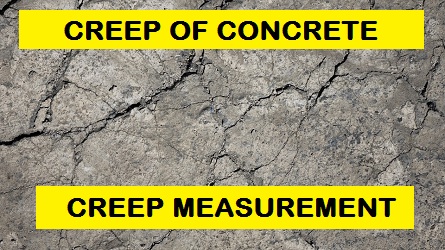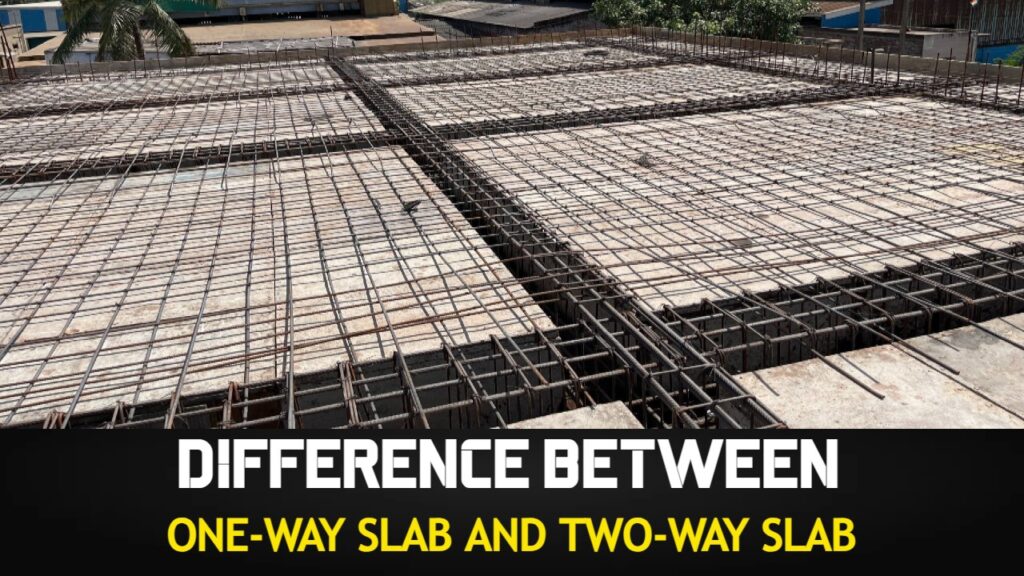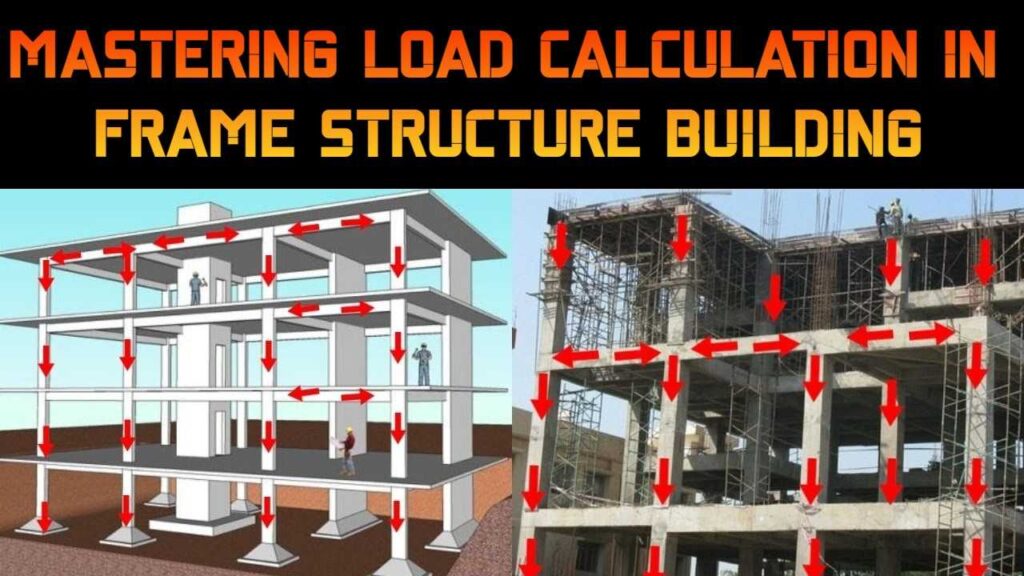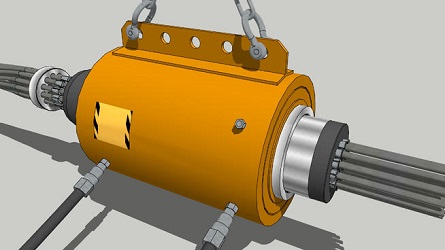Contents
CREEP OF CONCRETE
Creep can be defined as “the time-dependent” part of the strain resulting from stress. We have discussed in earlier articles that the stress-strain relationship of concrete is not a straight line relationship but a curved one. So, in this post, we will discuss Creep of Concrete -Definition, Factors, Measurement and Magnitude in details.
The degree of curvature of the stress-strain relationship depends upon many factors amongst which the intensity of stress and time for which the load is acting are of significant interest. Therefore, it clearly shows that the relationship between stress and strain for concrete is a function of time. The gradual increase in strain, without an increase in stress, with the time is due to Creep. From this explanation, creep can also be defined as the increase in strain under sustained stress.
All materials undergo creep under some conditions of loading to a greater or smaller extent. But concrete creeps significantly at all stresses and for a long time. Furthermore, creep of concrete is an approximately linear function of stress up to 30 to 40 per cent of its strength.
ALSO READ
- Factors Affecting Workabilty Of Concrete – Concrete Technology
- Workability of Concrete in Civil Construction
- What is the Purpose of Concrete Mix Design?
- Self Compacting Concrete (SCC)
- Concrete – Definition Properties and Classification
The order of magnitude of Creep of Concrete is much greater than that of other crystalline material except for metals in the final stage of yielding prior to failure. Therefore, creep in concrete is considered to be an isolated rheological phenomenon and this is associated with the gel structure of cement paste.
Cement paste plays a dominant role in the deformation of concrete. The aggregates, depending upon the type and proportions modify the deformation characteristics to a greater or lesser extent. Therefore, It is logical initially to examine the structure of cement paste and how it influences creep behaviour and then to consider how the presence of aggregate modifies the creep behaviour.
Cement paste essentially consists of unhydrated cement grains surrounded by the product of hydration mostly in the form of a gel. These gels are interpenetrated by gel pores and interspersed by capillary cavities. The process of hydration generates more and more gel and subsequently, there will be a reduction of unhydrated cement and capillary cavities. In young concrete, gel pores are filled with gel water and capillary cavities may or may not be filled with water. The movement of water held in the gel and paste structure takes place under the influence of internal and external water vapour pressure. The movement of water may also take place due to the sustained load on concrete.
The formation of gel and the state of existence of water are the significant factors on the deformative characteristic of concrete. The gel provides the rigidity both by the formation of chemical bonds and by the surface force of attraction while the water can be existing in three categories namely combined water, gel water and capillary water.
It is in interesting to find how such a conglomeration of very fine colloidal particles with enclosed water-filled voids behaves under the action of external forces. One of the explanations given to the mechanics of creeps is based on the theory that the colloidal particles slide against each other to readjust their position displacing the water held in gel pores and capillary cavities. This flow of gel and the consequent displacement of water is responsible for complex formation behaviour and Creep of Concrete.
Creep takes place only under stress. Under sustained stress, with time, the gel, the adsorbed water layers, the water held in the gel pores and capillary pores yields, flows and readjust themselves, which behaviour is termed as a creep in concrete.
FACTORS AFFECTING CREEP
1. Influence of Aggregate: Aggregate undergoes very little creep. It is really the paste which is responsible for the creep. However, the aggregate influences the creep of concrete through a restraining effect on the magnitude of creep. The paste which is creeping under load is restrained by aggregate which does not creep. The stronger the aggregate the more is the restraining effect and hence the less is the magnitude of creep.
2. Influence of Mix Proportions: The amount of paste content and its quality is one of the most important factors influencing creep. A poorer paste structure undergoes a higher creep. Therefore, it can be said that creep increases with an increase in water/cement ratio. In other words, it can also be said that creep is inversely proportional to the strength of concrete.
3. Influence of Age: Age at which a concrete member is loaded will have a predominant effect on the magnitude of creep. This can be easily understood from the fact that the quality of gel improves with time. Such gel creeps less, whereas a young gel under load being not so stronger creeps more.
MEASUREMENT OF CREEP
Creepy is usually determined by measuring the change with time in the strain of specimen subjected to constant stress and stored under appropriate condition. A typical testing device is shown in the figure below. The spring ensures that the load is sensibly constant in spite of the fact that the specimen contracts with time. Under such conditions, creep continuous for a very long time, but the rate of creep decreases with time.
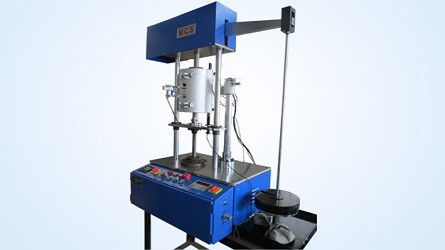
Under compressive stress, the creep measurement is associated with shrinkage of concrete. It is necessary to keep companion unloaded specimens to eliminate the effect of shrinkage and other autogenous volume change. While this correction is qualitatively correct and yields usable results, some research workers maintained that shrinkage and creep are not independent and are of the opinion that the two effects are not additive as assumed in the test.
MAGNITUDE OF CREEP
It is generally assumed that the creep continues to assume limiting value after an infinite time under load. It is estimated that 26 per cent of that 20 years creep occurs in 2 weeks. 55 per cent of 20 years creep occurs in 3 months and 76 per cent of 20 years creep occurs in 1 year.
If creep after 1 year is taken as Unity, then the average value of creep at later ages are :
1.14 after 2 years
1.20 after 5 years
1.26 after 10 years
1.33 after 20 years and
1.36 after 30 years
There are many expressions to give the magnitude of ultimate creep in a concrete member. Ross suggested the relation between specific creep (creep strain per unit stress) ‘c’ and time under load ‘t’ in the form,
c = (t / a + b * t)
where ‘a’ and ‘b’ are constants. If a graph is drawn with ‘t’ in the x-axis and ‘t/c’ in the y-axis, it shows a straight line of slope ‘b’ and the intercept on the ‘t/c’ is equal to ‘a’.
Then the constant can be easily found out. The ultimate creep at an infinite time will be ‘1/b’ from the above expression. It is interesting to observe that when t=a/b, c=b/2 i.e. one half of the ultimate creep is realised at time t=a/b.
